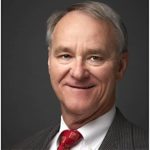There are two certainties in life, and those are that we will die and pay taxes. Actually, there is a third one, and that is that most of us will (fortunately) reach old age before we die. In our old age, we will need care, and adapted living conditions.
Today, as those in senior living are keenly aware, about one in every seven Americans is aged more than 65 years, and by 2040 that number will amount to one in five, the federal Administration for Community Living has reported. Needless to say, this demographic shift will result in a continued and increased influx of older adults into senior housing of all shapes and sizes.
The markets where this growth is most significant are Florida, Texas and Arizona. Often, people will have moved in an earlier stage of their life to one of these states — typically in their 50s or 60s — and now these same people have grown older. People also move out-of-state to follow their children as the latter settle with their own children wherever their careers take them. And finally, some will choose to move to warmer climates at old age.
Where do all these people live? One type of project that is particularly gaining in popularity with developers are pod complexes where, on a plot of land of, say, 30 acres, you have a hub that delivers essential community services (a cafeteria, a recreation hall, etc.), and then four spokes in the form of clusters of pods that cover the entire spectrum of care — independent living, assisted living, full nursing care and memory care units — allowing people to easily move from one cluster of pods to another. Surrounding the hub and pods sometimes are developed single-family homes that adult children of elderly parents will move into so the children can live close to their parents.
The great advantage of the set-up with the pods is that nobody needs to miss their friends and familiar surroundings anymore as their needs change. You typically will find these pods in downtown areas, close to hospitals.
Solid, low-risk yields
Developers who invest in senior housing can expect yields of 6 to 7%, stemming from rental income, with an added 3 to 4% appreciation every year. The yields are not only solid, they also come at low risk.
One of the things that makes senior housing such a valuable investment proposition is the length of the leases, which typically are much longer than they are with younger tenants. Older adults do not want to hop from one apartment complex to another. If they feel comfortable somewhere and are surrounded by staff members who treat them well and are in a place that is well kept, they will want to stay put for the rest of their lives. And as previously mentioned, they still can move inside the complex from one cluster of pods to another.
Much competition exists in the market for prime investment opportunities in senior housing. Investors will do well to keep their heads cool and show patience and persistence in their search for the sites that best fit their investment goals. In general, senior housing is one real estate investment class that is poised to continue offering solid and risk-free yields for many more decades to come.
Based in Florida, Ben Crosby, CCIM, ALC, is managing broker with National Land Realty. The company’s proprietary video technology, Land Tour 360, as well as its GIS land mapping system, LandBase, is offered for free to the public. More info at www.nationalland.com.
The opinions expressed in each McKnight’s Senior Living guest column are those of the author and are not necessarily those of McKnight’s Senior Living.




